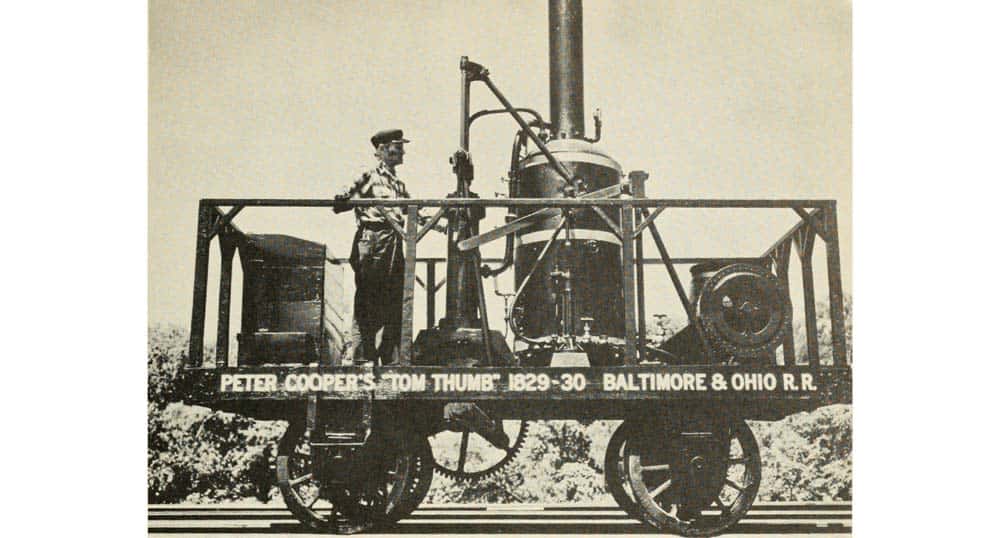Tom Thumb, The Tiny Big Boy Relative
Long before the Baltimore & Ohio (B&O) Railroad would become a household name for its famous steam-powered named passenger trains, the company used horses to pull their trains. The company would be on the forefront of steam railroading history though when the first American-manufactured steam locomotive, called ‘Tom Thumb’, traveled B&O rails in 1830.

History of Tom Thumb
The Original (1829)
Tom Thumb was designed and built by Peter Cooper, an inventor and later politician, who hoped that the locomotive would convince the B&O to embrace steam locomotives. The coal burning locomotive featured a 0-4-0 wheel arrangement and an upright boiler. Yes, this tiny locomotive led the way to the huge American steam locomotive builder boom in the 1800s, and eventually to the ALCo-built Big Boy.

Tom Thumb made its debut for the B&O leadership in August 1830, when the locomotive led a passenger car from Baltimore to Ellicott Mills, Maryland. The officials came away impressed with the locomotive, which traveled more than 10 mph.
Legend has it that on a return trip from Ellicott Mills, a race was setup between the locomotive and a horse-drawn rail car. After getting out to a strong early lead, Tom Thumb lost steam when the blower belt came off its pulley. Cooper was able to fix the belt and resume the race but could not overcome the lost time. Unfortunately there was no documentation proving such race occurred causing many to question the legitimacy of the story; but even if so, it speaks to the legend of this historic steamer.
Tom Thumb was designed for demonstration purpose; and although the locomotive was used to haul some passenger trains into 1831, the locomotive never entered regular revenue service. Cooper’s locomotive would be scrapped in 1834, ending the story of the first steam locomotive; or so you would think.
Tom Thumb Gets a Replica
As the B&O prepared to celebrate its 100th anniversary with the ‘Fair of the Iron Horses’ in 1927, a decision was made to build a replica of the Tom Thumb as a highlight of the event. Even though the original locomotive was scrapped nearly a century earlier, detailed notes and descriptions left by Cooper and a wooden model of the locomotive to helped builders in the construction of the replica.
The replica had the same basic design as the original, however a few noticeable changes were made since the railroad intended to operate the locomotive during exhibition. The newer Tom Thumb was significantly larger and heavier than the original, thanks in part to a larger blower being installed on the replica.
After making its debut at the Fair of the Iron Horses, the B&O used the replica for promotional events including the World’s Fair and Steam Expo ’86. Eventually the locomotive made its way to the B&O Museum in Baltimore for permanent display.

Remembering Tom Thumb’s Legacy
Nearly 100 years after the replica was built, Tom Thumb’s legacy remains on display at the B&O Museum. Due to the efforts of the museum to preserve the locomotive, the newer Tom Thumb is operational and occasionally steams up for special occasions at the museum.
To learn about about this important piece of railroad history, or to learn more about the museum, visit the B&O Museum website.







